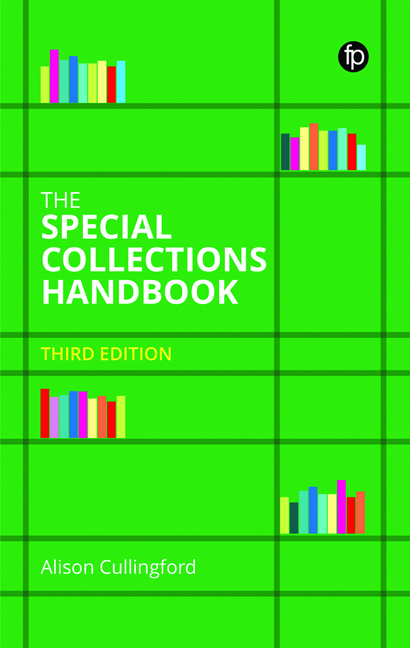Book contents
11 - Using Special Collections in Education
Published online by Cambridge University Press: 28 April 2022
Summary
Introduction
In this chapter we explore the role of Special Collections in education: teaching, learning and academic research. What brings together the activities discussed is not only their location in educational establishments, but the fact that all involved are learning in a formal structure. Successful learning, however, has much in common with the activities covered in previous chapters.
This chapter covers:
1 Introduction to teaching and learning and recent developments.
2 Barriers.
3 Teaching timing, content and methods.
4 Teaching infrastructure.
5 Working with schools.
6 Supporting research.
7 Suggestions for further reading and useful websites.
A note on terminology
What do we mean by ‘teaching’ and ‘learning’? Teaching is imparted by a teacher to those who are learning; learning is what those being taught are ideally doing. Learning can happen without teaching but if teaching does not lead to learning, it has no point. This should not imply that teaching is active and learning passive. As we shall see, best practice in modern education involves active participation by students. In this chapter, I use ‘teaching’ to cover the practice of engaging with a class and ‘learning’ to cover all other activities.
For convenience, I use the term ‘university’ for organisations of all kinds across higher and further education.
A learning revolution
Working with students has much in common with the outreach discussed in the previous chapter. Until recently, Special Collections were the preserve of the more traditional audience of academics and researchers and less accessible to undergraduates (with exceptions, of course).
This has changed dramatically over the last 20 years or so. In university Special Collections, it is now the norm for Special Collections staff to teach on courses of study and for student learning to be a significant part of core business. Students are also more likely to use Special Collections in other sectors. Factors underlying this welcome change include:
1 Internal advocacy. Special Collections increasingly must demonstrate their value to their parent organisation and justify their resources (see Chapter 14). Contributing to the mission-critical work of student learning helps show that collections are relevant to a modern university.
2 Marketing. Universities seek unique selling points in a crowded market to attract the best students and academic staff. The chance to learn with unique Special Collections can be one of those points.
- Type
- Chapter
- Information
- The Special Collections Handbook , pp. 265 - 286Publisher: FacetPrint publication year: 2022



